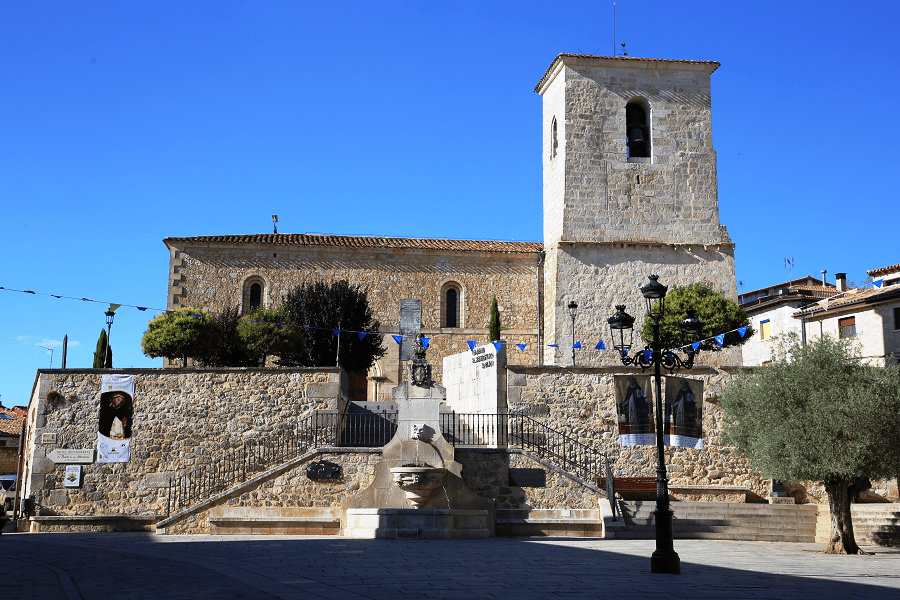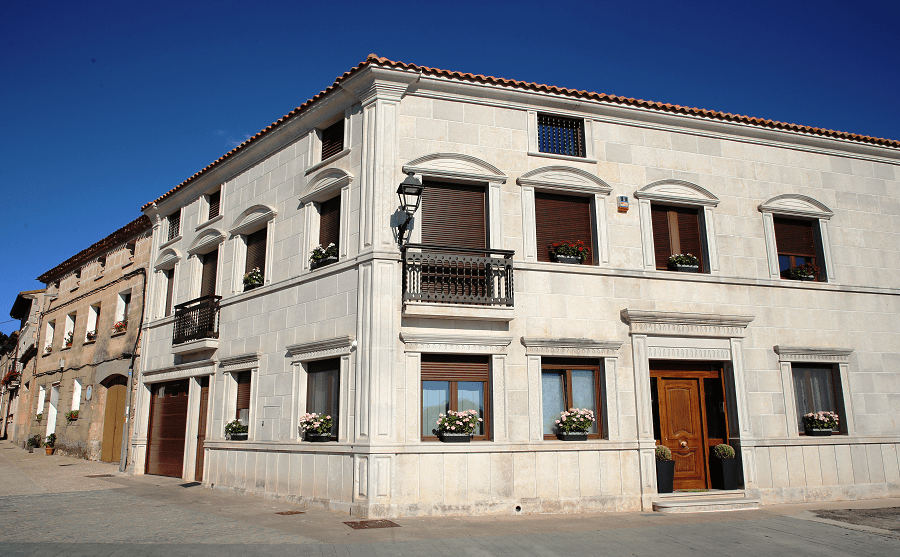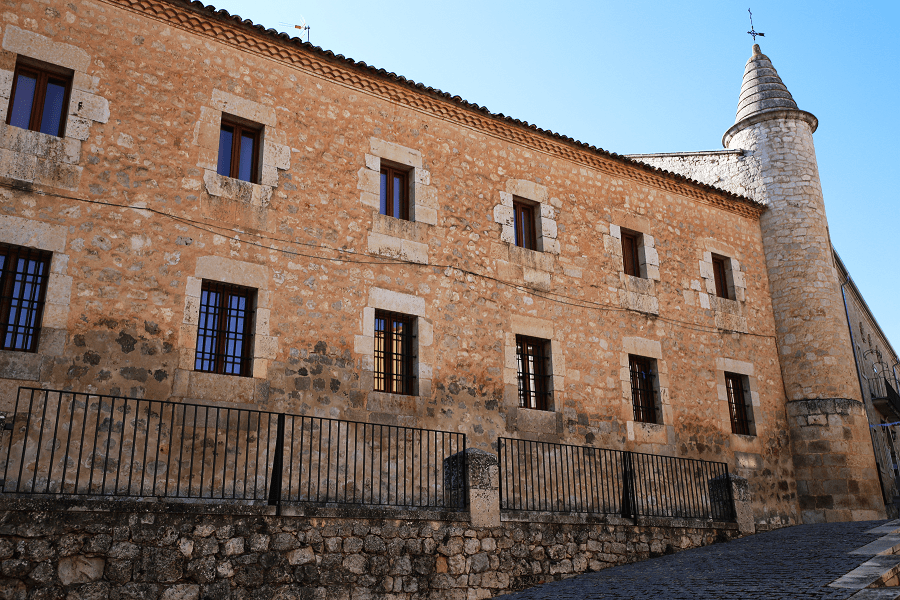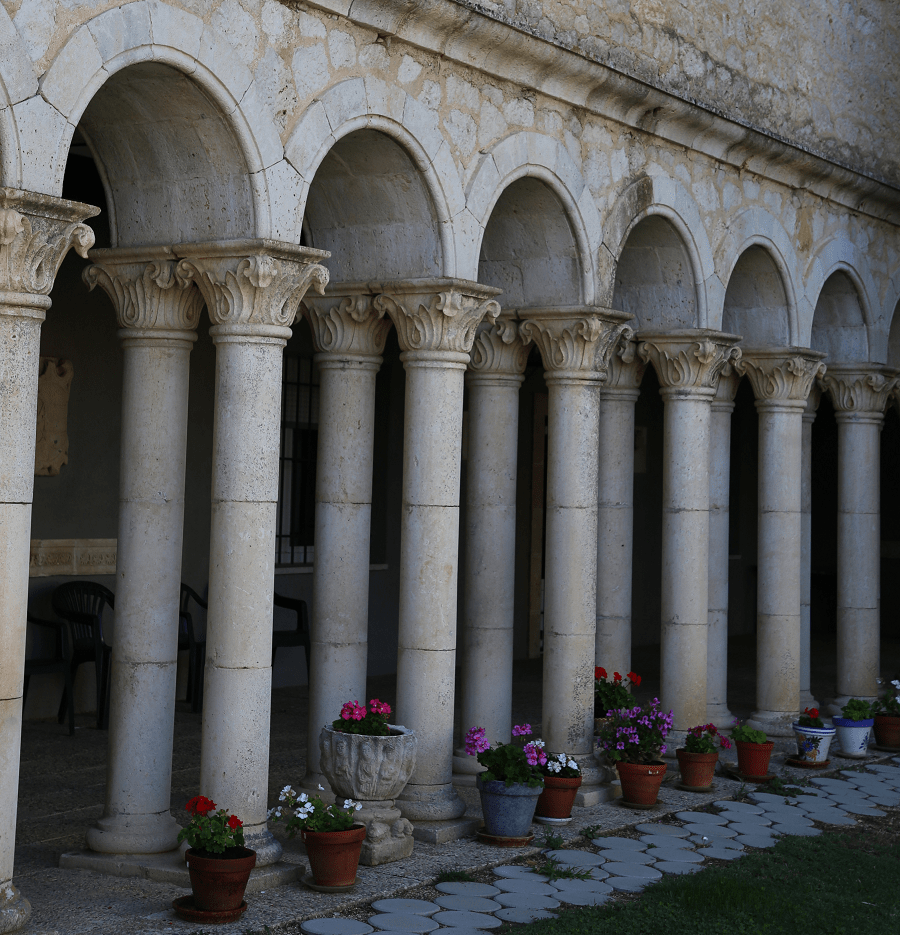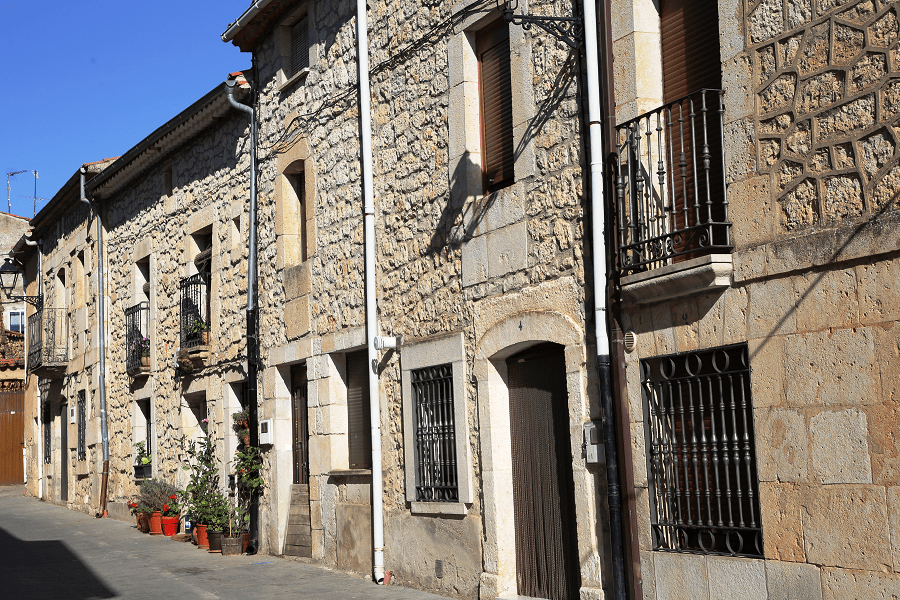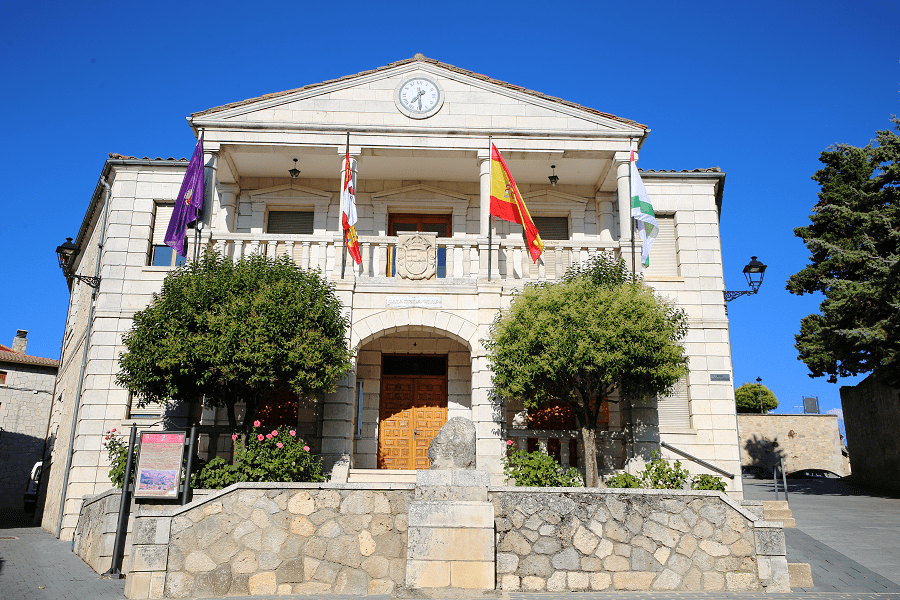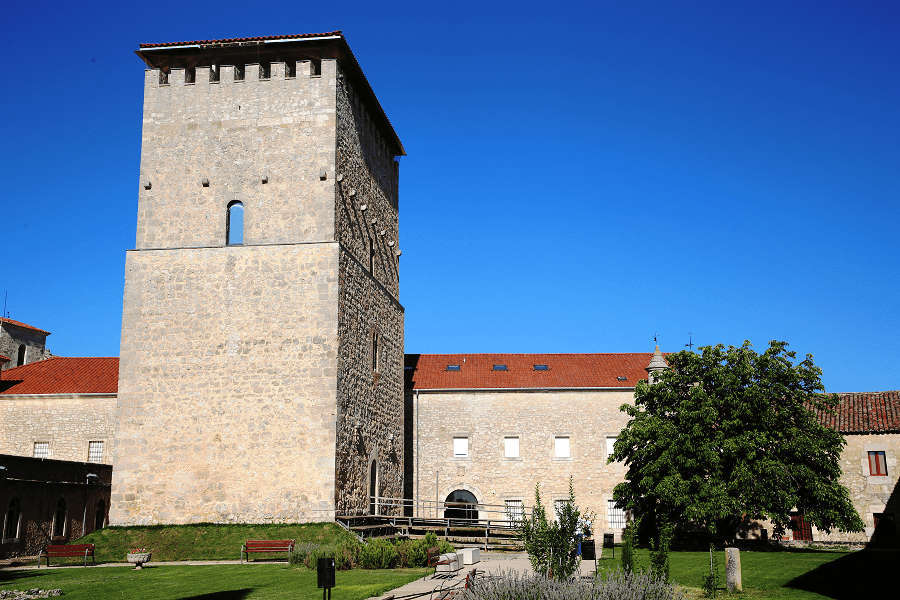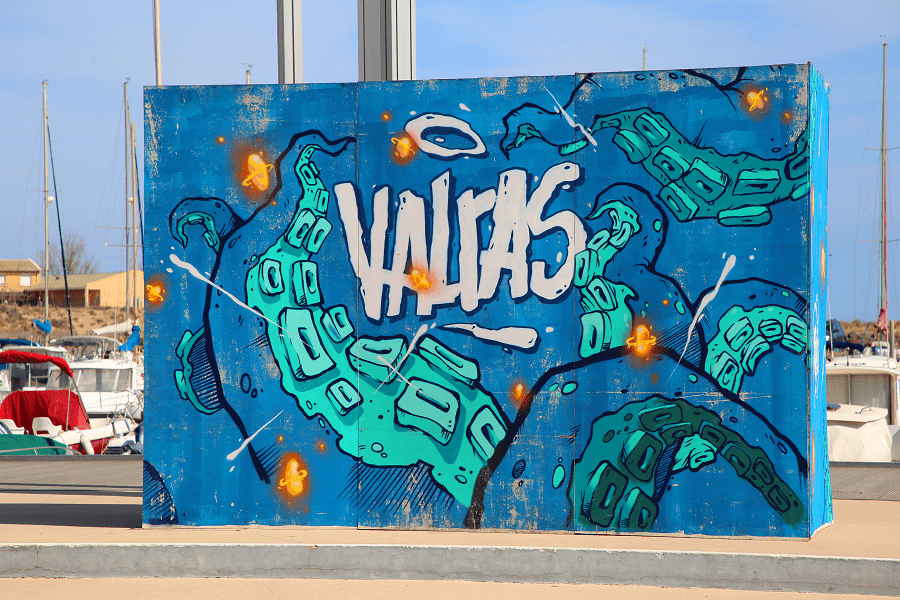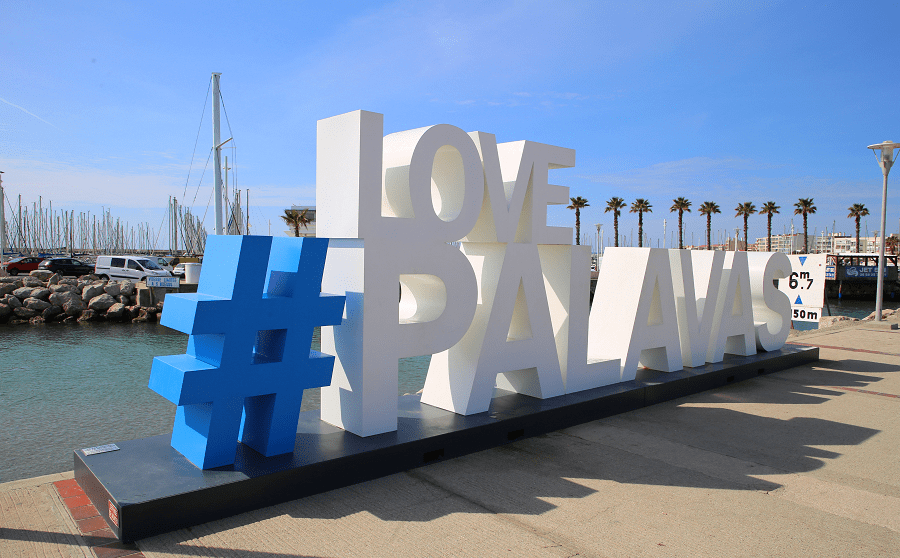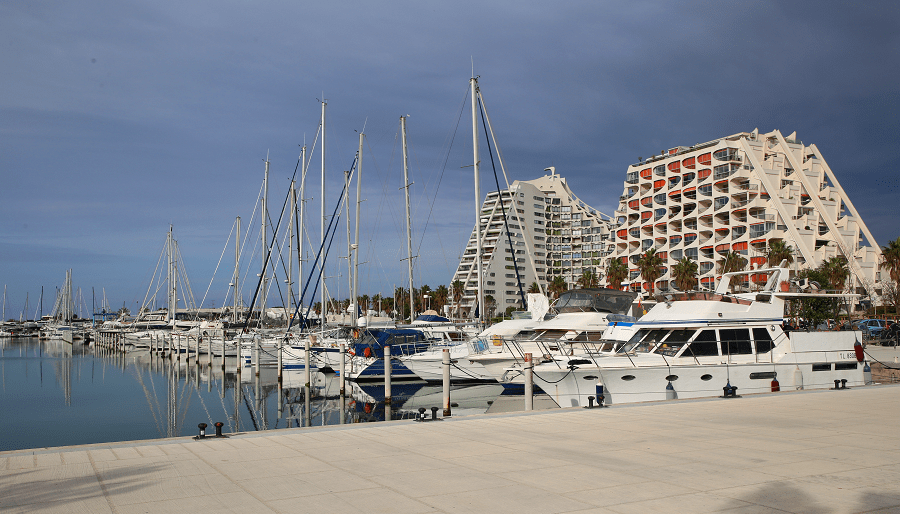Caleruega is a city and municipality in the autonomous community of Castile and León, province of Burgos, Spain.
The historical importance of the municipality lies in being the birthplace of Santo Domingo de Guzmán and of the Holy Rosary.
Saint Dominic OP, also known as Dominic of Osma and Dominic of Caleruega, often called Dominic de Guzmán and Domingo Félix de Guzmán (8 August 1170 – 6 August 1221), was a Castilian Catholic priest and founder of the Dominican Order. Dominic is the patron saint of astronomers.
The Holy Rosary also known as the Dominican Rosary, or simply the Rosary, refers to a set of prayers used in the Catholic Church and to the string of knots or beads used to count the component prayers. When referring to the prayer, the word is usually capitalized (“the Rosary”, as is customary for other names of prayers, such as “the Lord’s Prayer”, and “the Hail Mary”); when referring to the beads, it is written with a lower-case initial letter (“a rosary bead”).
The prayers that compose the Rosary are arranged in sets of ten Hail Marys, called decades. Each decade is preceded by one Lord’s Prayer (“Our Father”) and traditionally followed by one Glory Be.
Since 2017 the city has been a part of the network “The most beautiful towns in Spain“.
Tourism and main attractions
The Parish of San Sebastián dates from the 12th century and is Romanesque in style. From the original, the entrance to it, the bell tower and the presbytery are preserved. Inside we can find a hanging Christ on the cross and several carvings of saints, among which Saint Sebastian and the Virgin of Candelaria stand out.
Also the tomb of Blessed Juana, which was previously in a non-existent chapel today. Santo Domingo was baptized in this temple. It should be noted that the baptismal font is not the original.
Away from the parish church is the Torreón de los Guzmanes, a defense tower built during the 12th century. It had some stained glass windows that have been removed for its restoration. Its battlements are also remarkable since they were placed during the construction of the convent, in the 1950s. Today it is integrated into the cloister of said convent.
The Dominican Convent dates from the 1950s of the 20th century, Father Carro pioneering it. Inside there is a museum adapted for the blind and after going down some stairs you will find the Bodega de la Beata Juana with a representation of her miracle.
Adjacent to the convent is the Royal Monastery of Santo Domingo de Caleruega inhabited by Dominican nuns. It dates back to the 13th century and was originally inhabited by the canons of San Agustín, but after the canonization of Santo Domingo, King Alfonso X el Sabio granted Caleruega on July 10, 1266 a special privilege in which Dominican nuns from San Esteban de Gormaz and the Señorío de Caleruega would pass into the hands of the nuns of this monastery, with Doña Toda Martínez being the prioress at that time.
It is also interesting that in the cloister of this monastery is the tomb of the Infanta Leonor, daughter of Alfonso X el Sabio and Violante de Aragón, granddaughter Fernando III el Santo and Jaime I el Conquistador.
How to get to?
From Burgos 57 min (94.3 km) via A-1
From Valladolid 1 hr 34 min (124 km) via A-11 and N-122
From Madrid 2 hr 2 min (198 km) via A-1
Main information
Area: 47 km² (municipality)
Coordinates: 41°49′32″N 3°29′13″W
Population: 419
Languages: Spanish
Currency: Euro
Visa: Schengen
Time: Central European UTC +1




